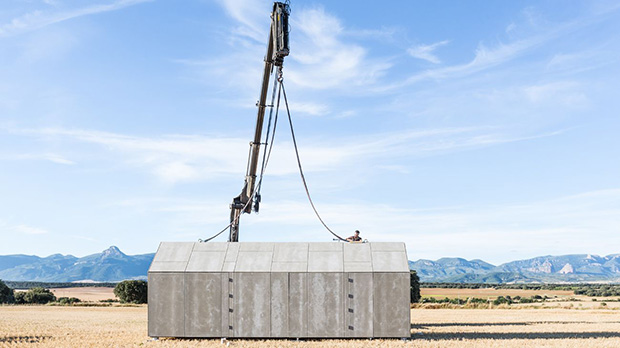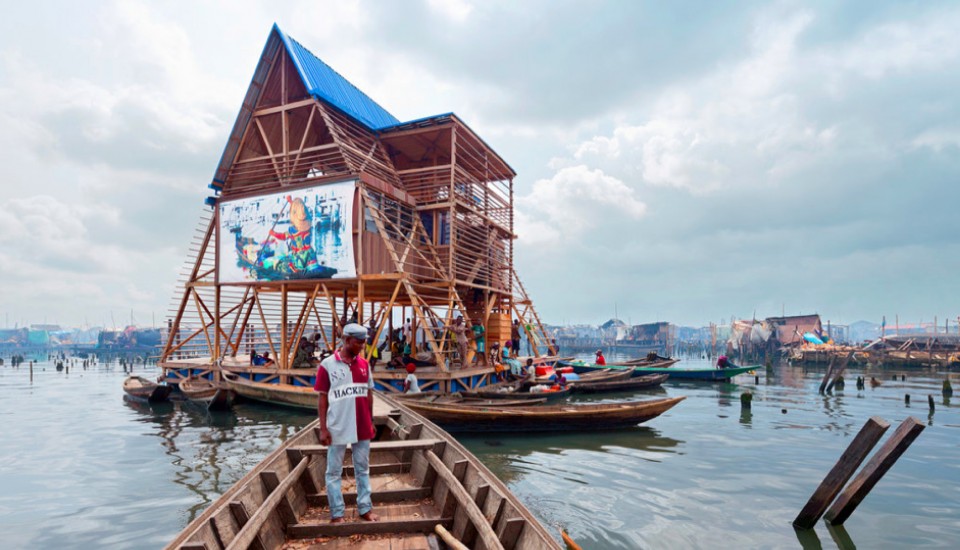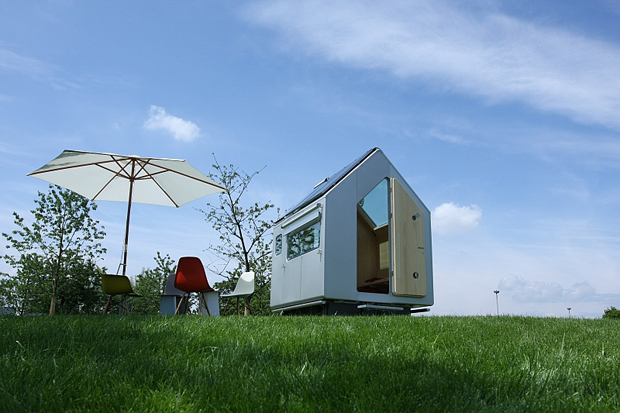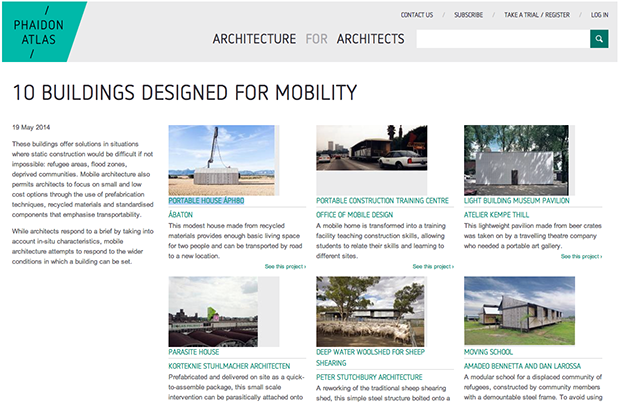
Ten buildings built to be moved
From a lake school to Renzo Piano's eco hut, The Phaidon Atlas picks out some great portable buildings
Regular Phaidon readers will already be familiar with our recently launched Online Atlas, the dedicated resource website for architects, students and true lovers of architecture .
The site, which features over 130,000 images, 3,079 projects from 1,537 architects in 115 countries around the world is an invaluable aid to anyone who works in the industry and needs to know who did what, where - and, of course, how.
The Atlas editors have a regular feature in which they focus on a specific, occasionally left field aspect of architecture or an architectural project each week. It's called Editors' Focus and the first one was all about small buildings; a more recent post dwelt on nine of the hardest to construct buildings listed. This latest round-up takes in portable architecture.

As the Atlas explains, this isn’t an architectural gimmick, but often an answer to a genuine design need.
“These buildings offer solutions in situations where static construction would be difficult if not impossible," it argues. These might include refugee areas, flood zones and deprived communities.
Take the Makoko Floating School, built by Nlé architects for a lagoon on the outskirts of Lagos. “It has taken an innovative approach to address the community’s social and physical needs in view of the impact of climate change and a rapidly urbanizing African context,” the Atlas explains.
The list also includes the Moving School in Thailand by Amadeo Bennetta and Dan Larossa which the Atlas calls: “a modular school for a displaced community of refugees, constructed by community members with a demountable steel frame.”
The building remains footloose by foregoing concrete foundations, and instead uses reclaimed tyres and gravel to keep it in place.

And there’s also Renzo Piano’s Diogene, (which we've previously written about on phaidon.com) an ecologically sound, mobile micro-house, powered only by natural resources. Piano named his creation after the ancient Greek philosopher who lived in a barrel. Nice reference, though we feel Renzo’s building offers a more luxe form of off-grid living, what with its photovoltaic cells, solar modules, rainwater tank and triple glazing.
You can browse through the full list here, and after registering go through to read all about each fascinating project. All in all, it's an easy way in to finding the kind of content that will really nourish and enrich the committed architecture lover.

Incidentally, you may be interested to know that the Atlas team are tweeting at @phaidonatlas so check out their tweets and be sure to favourite and retweet anything you like - we're sure you'll find lots that you do. For a limited time, anyone tweeting an Atlas project - any project - will be rewarded with one week's free subscriber access to the site. You can find out more about the Online Atlas here.
Meanwhile, for more on contemporary building, please take a look at The Phaidon Atlas of 21st Century Architecture and the Phaidon Architecture Travel Guide App.